Annie Jones, known as the bearded lady of the Victorian era, lived a life that was as remarkable as it was unusual. Born in Virginia on July 14, 1865, Annie’s entrance into the world immediately set her apart. Unlike other babies, she was born with a fine covering of hair on her chin, which shocked her parents at first. They were unsure how to handle her unique appearance, but soon, her unusual condition began to seem less like a burden and more like an opportunity. The Jones family realized that Annie’s difference could bring them unexpected opportunities, and this realization would shape the rest of her life.
Her story is deeply intertwined with the world of sideshows and human curiosities, where people with unique appearances or talents were put on display for paying audiences. In the late 19th century, such exhibitions were popular entertainment. People flocked to see “freaks of nature,” and those who possessed unusual traits often made a living by showing themselves off to the public. The name that looms largest in this field is P.T. Barnum, one of the most famous showmen in American history. Barnum ran a series of museums and circuses, showcasing everything from exotic animals to people with extraordinary physical characteristics.
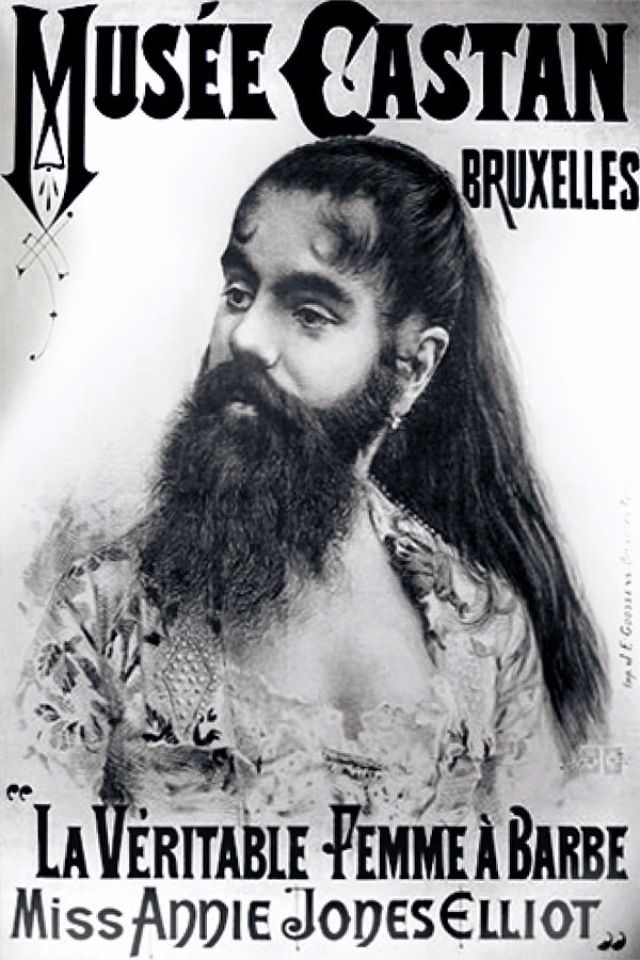
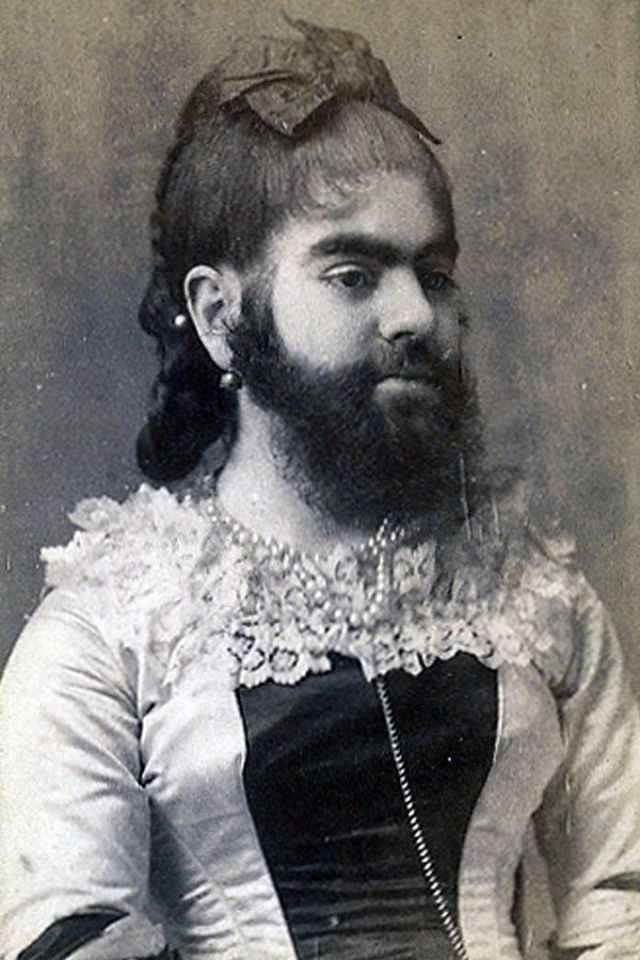
It didn’t take long for Barnum to hear about Annie. When she was barely a year old, her parents brought her to New York City to be featured in Barnum’s museum. She was given the stage name “The Infant Esau,” a biblical reference to Esau, the grandson of Abraham, who was known for being hairy. In the Bible, Esau was born covered in hair, much like Annie, making the name a fitting choice. Though Annie was just a baby, she quickly became a popular attraction, drawing crowds eager to see the unusual child.
Annie’s early stint in Barnum’s museum was incredibly successful. Visitors were fascinated by the tiny, hirsute child, and Barnum recognized her potential as a long-term attraction. He offered Annie’s mother, Mrs. Jones, a contract that would secure Annie’s place in the museum for three years. The contract came with a generous salary of $150 a week—an enormous amount of money at the time, especially for a young child. Mrs. Jones agreed to the deal and moved to New York City with her daughter to begin what would become a long and prosperous career in the world of sideshow entertainment.
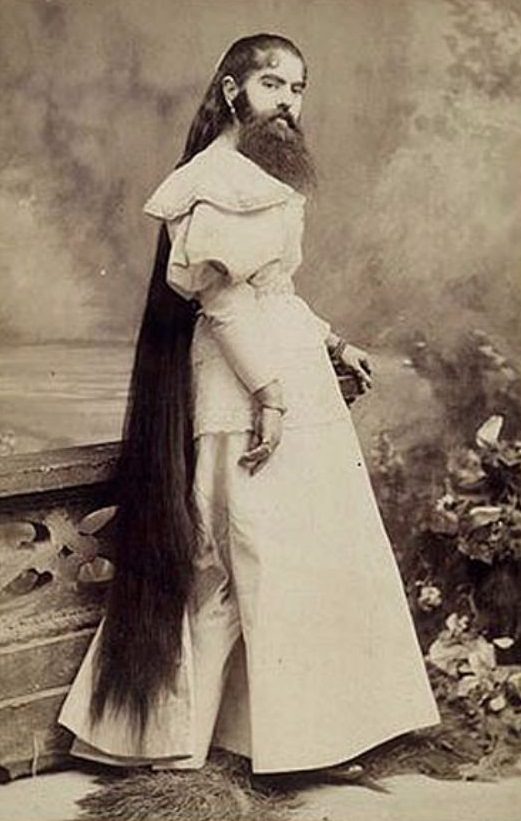
However, Annie’s time in the spotlight was not without its dangers. Early in her career, a family emergency forced Mrs. Jones to return to Virginia, leaving Annie in the care of a nanny appointed by Barnum. During this time, a local phrenologist kidnapped Annie, hoping to exhibit her for his own profit. Phrenology was a pseudoscience that claimed to understand a person’s character based on the shape of their skull, and people who believed in it often became involved in sideshows. The phrenologist tried to hide Annie in upstate New York and show her off privately, but fortunately, she was quickly found and returned to her mother’s care. From that point on, Mrs. Jones made sure to stay close to her daughter at all times to prevent any further attempts to exploit her outside of the official sideshow circuit.
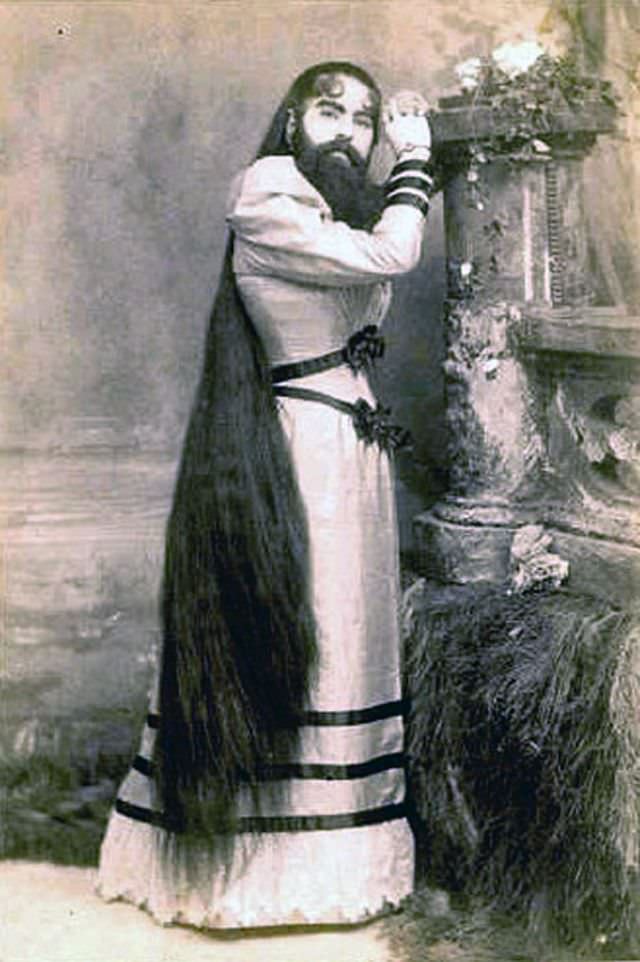
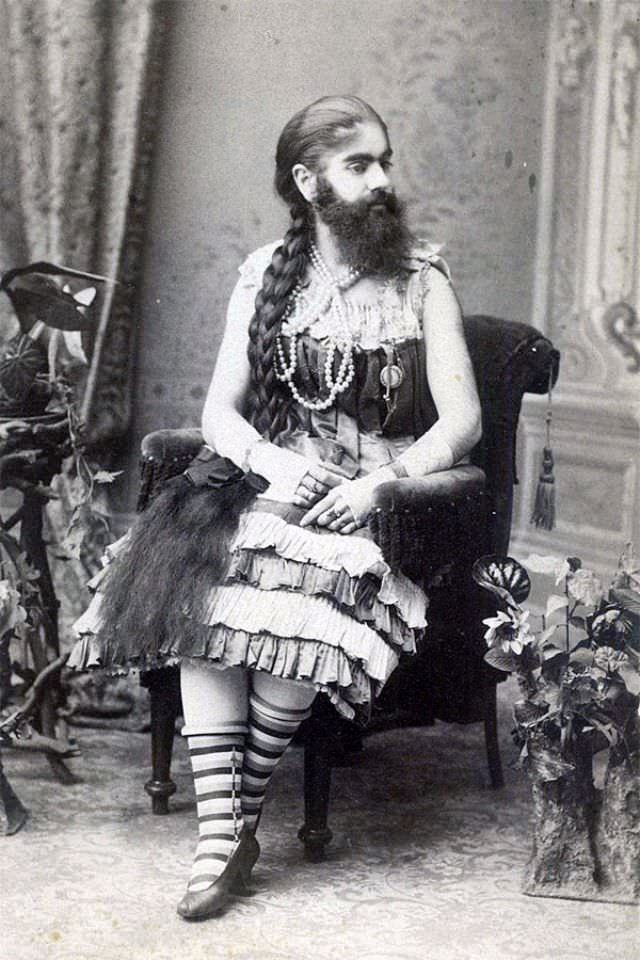
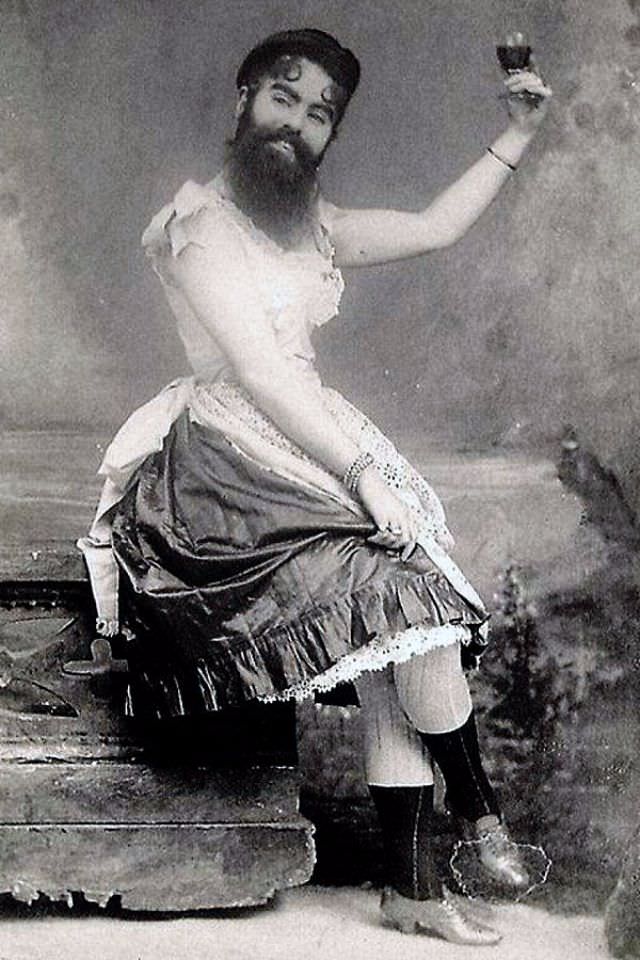
As Annie grew older, so did her fame. She remained with Barnum for much of her life, performing in his “Greatest Show on Earth” and at various dime museums, which were small, inexpensive exhibitions where people could see curious objects and individuals. Her stage name evolved as she did: as a child, she was known as the “Esau Child,” but as she matured, she became “The Esau Lady.” This evolution reflected both her aging and her growing reputation. Annie’s appearance continued to astonish audiences as she not only maintained her beard but also grew her head hair to extraordinary lengths—over six feet long. She became an icon of the sideshow world, and people came from all over to see her.
Annie was not content to rely solely on her unique appearance to draw attention. She developed several other talents to complement her stage presence. She learned to play musical instruments and became known for her gracious manners and sophistication. Unlike some sideshow performers, who were portrayed as grotesque or pitiable, Annie cultivated an air of dignity and refinement. She dressed well and spoke eloquently, earning her respect as both an entertainer and a person. Many people who met her in person were struck by how graceful and kind she was, and this helped to set her apart from other performers who were merely seen as oddities.
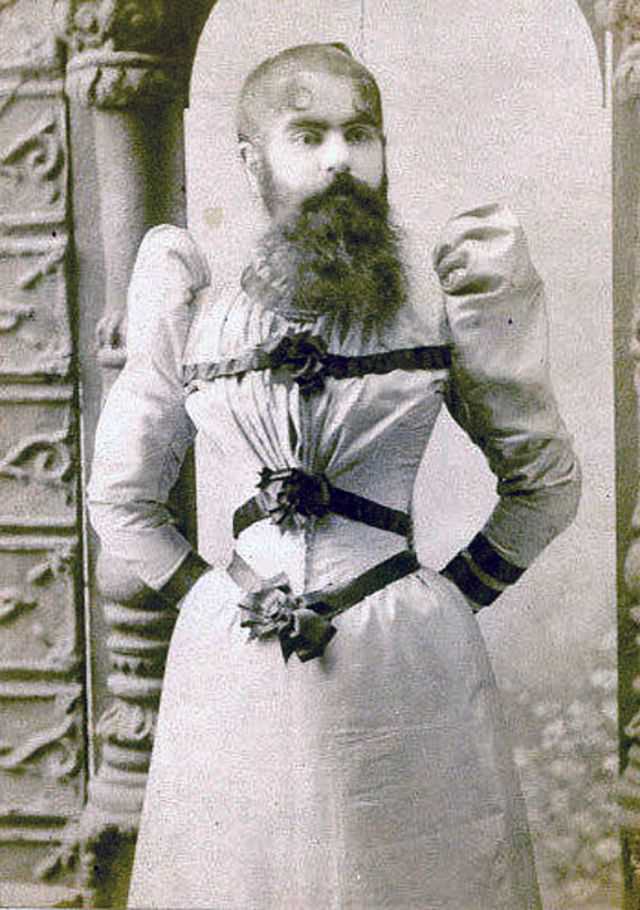
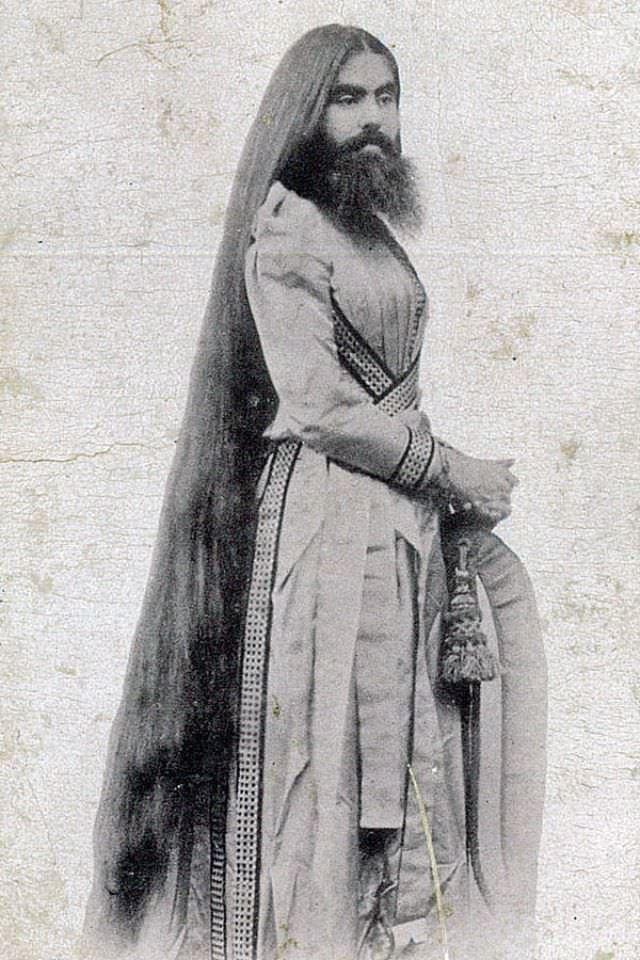
Annie’s personal life was as complex as her public one. At the age of sixteen, she married Richard Elliot, a man who worked in the sideshow industry as a bally talker—someone who stands outside the tent and encourages people to come inside. The marriage lasted for fifteen years, during which time Annie continued to perform while Richard handled much of the business side of things. Eventually, the couple divorced, though they had worked closely together for over a decade.
Not long after her divorce from Richard, Annie married again. This time, she wed William Donovan, another sideshow talker. Together, they decided to branch out on their own and left Barnum’s show to tour Europe as an independent act. William acted as her agent, managing the business side of their operation while Annie performed. This period of her life was one of adventure and independence, as she was no longer tied to the rigid structure of Barnum’s show. However, this freedom was short-lived, as William died unexpectedly. Annie, unsure of how to continue on her own, decided to rejoin Barnum’s show after her husband’s death.
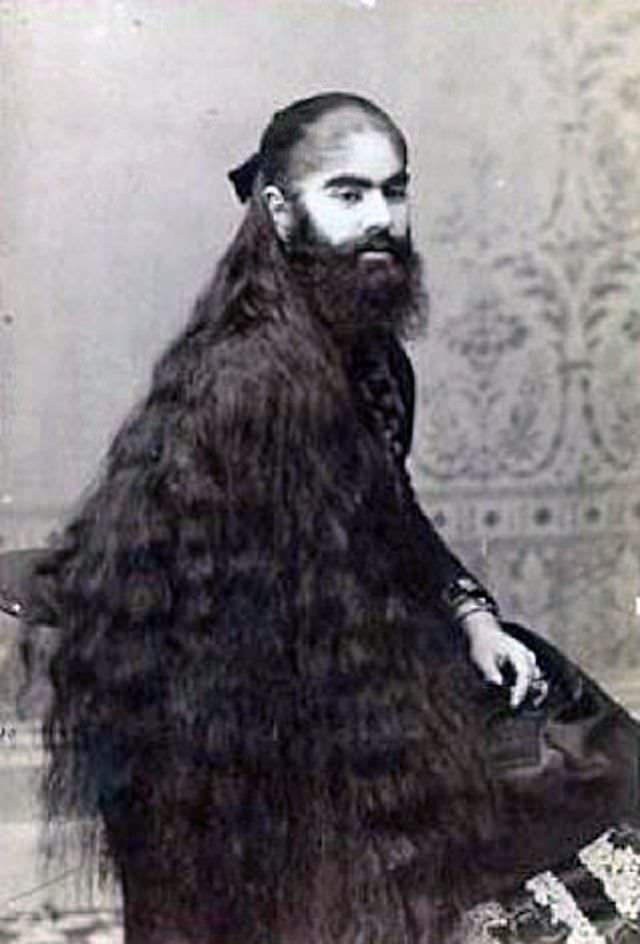
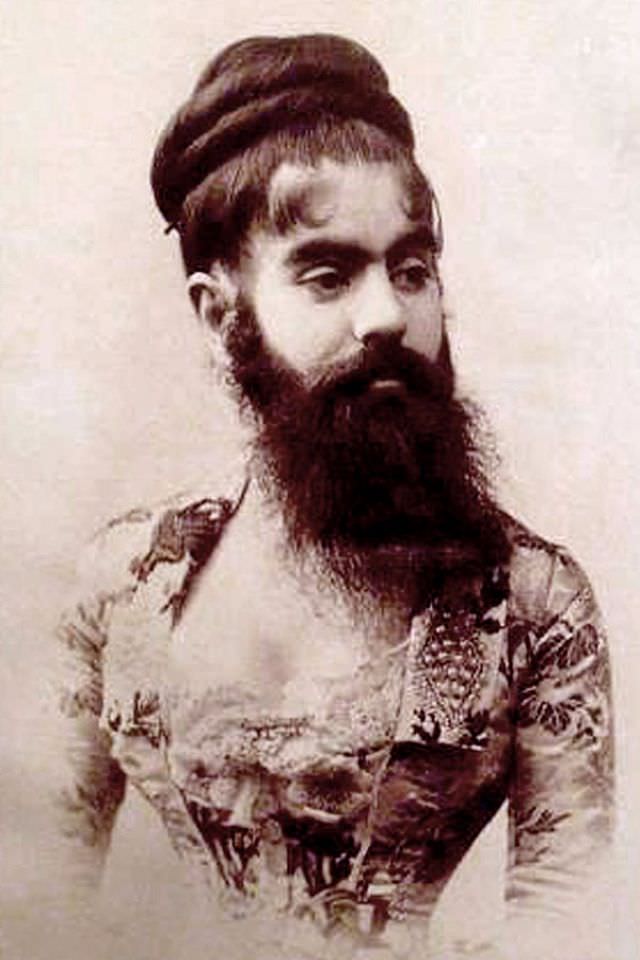
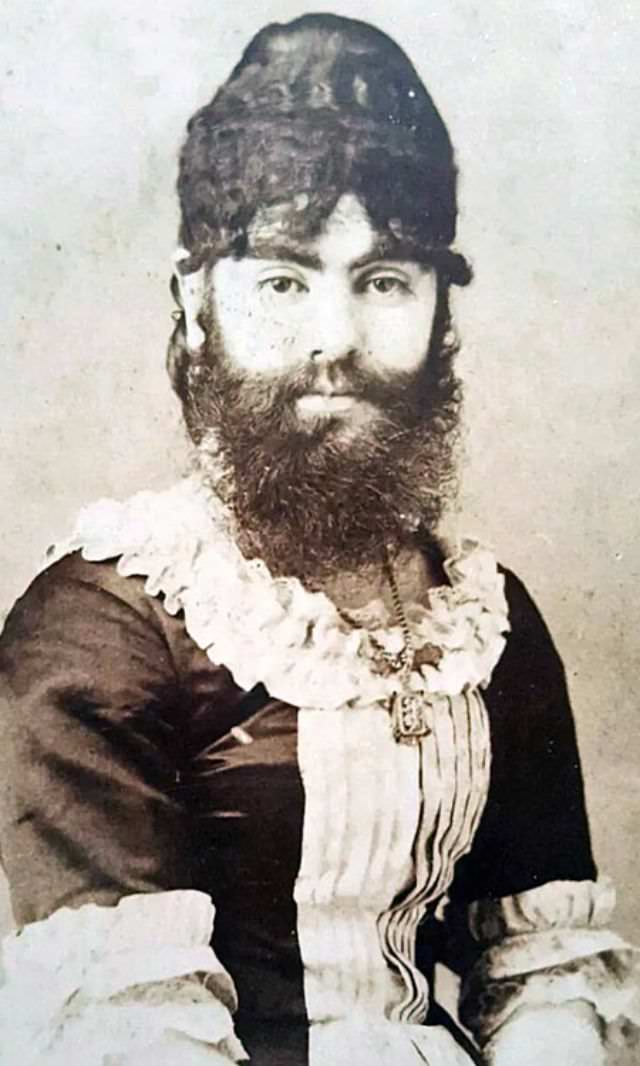
Throughout her life, Annie remained a beloved figure in the sideshow world. Her career lasted for thirty-six years, during which time she traveled across the United States and Europe, delighting audiences with her appearance, her talents, and her charm. She lived a life that was filled with both triumph and tragedy, but through it all, she remained resilient. Though her beard was the feature that first brought her fame, it was her personality and grace that made her truly memorable to those who met her.
In 1902, after years of performing, Annie’s health began to decline. She had been traveling for much of her life, and the demands of constant performances had taken a toll on her. While visiting her mother in Brooklyn, she fell ill. On October 22, 1902, at the age of thirty-seven, Annie Jones passed away. She had spent nearly her entire life in the public eye, becoming one of the most well-known sideshow performers of her time.


